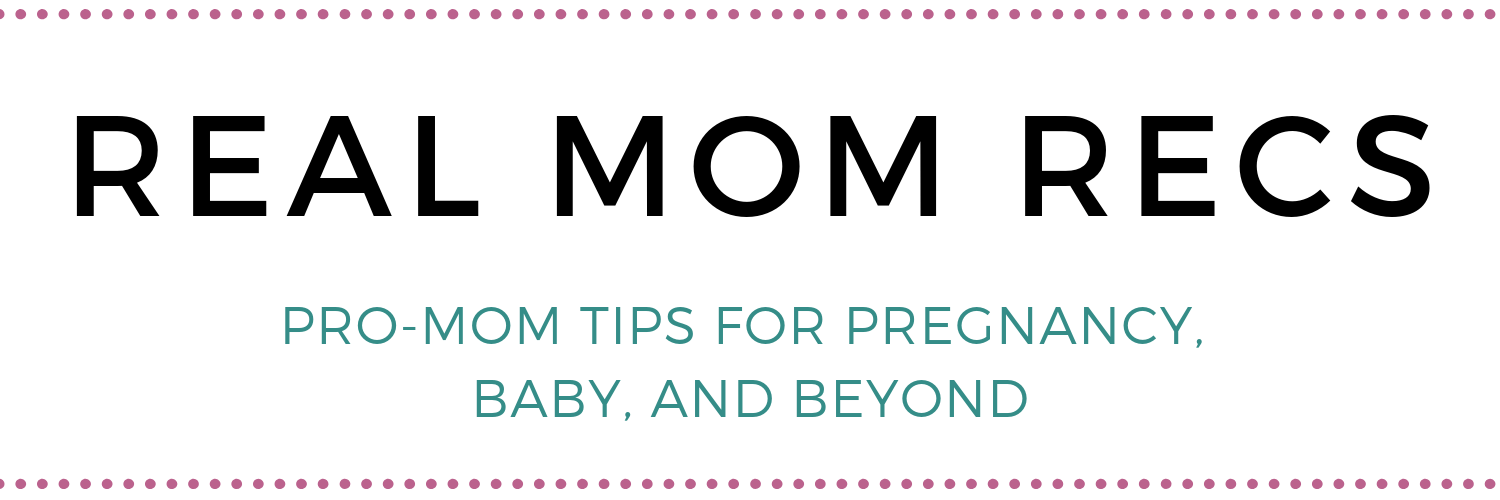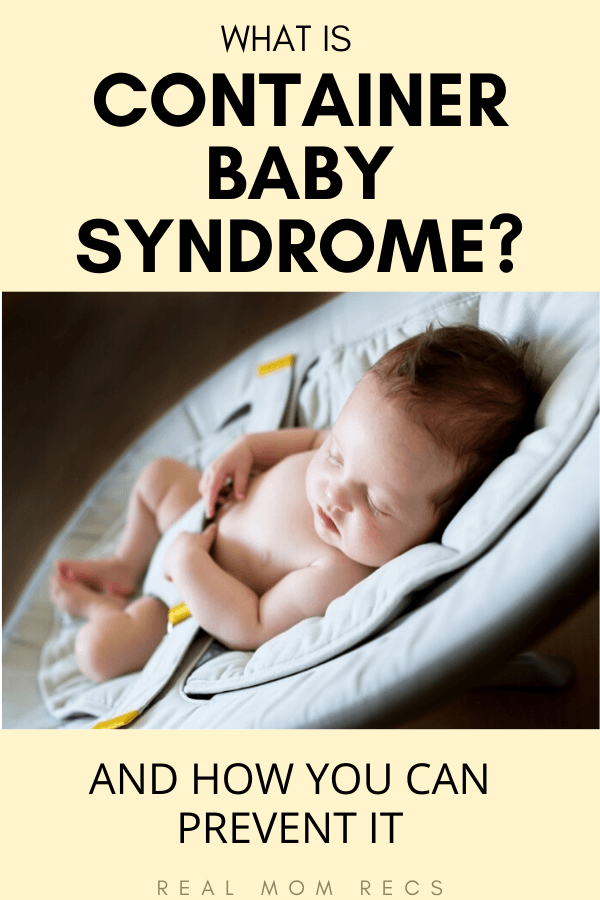I briefly mentioned Container Baby Syndrome in my post about what you need to know before taking your newborn home and many parents have reached out to me with questions. It seems like this is not something new parents are told about, so I’m going to explain what this is and how you can prevent it in your baby.
What is Container Baby Syndrome?
First things first: let’s identify what we’re talking about. Simply put, babies are spending too much time in various types of “containers”.
Take a moment to consider all the different types of baby equipment that didn’t exist 50 years ago. We have infant car seats, bouncy seats, swings, mamaroos and rockaroos, bumbo seats, dockatots, sleep positioners, high chairs, strollers, walkers, jumpers, exersaucers, and the list goes on. These are all baby products that new parents are told their baby needs. After the stuff is accumulated, we parents want to put it to use. Clever marketing of these products even convinces us that they are good for our babies.
The result? Baby spends his day going from one container to another. All these pieces of baby equipment restrict the baby’s ability to move on its own. This can having harmful effects over time.
Another part of the problem: parents are afraid to place baby on their tummy. Because of the back to sleep campaign, parents are aware that it is far safer for baby to sleep on their back vs. on their tummy. Some parents take that to mean that baby should NEVER be placed on their tummy. This is a false and dangerous assumption! Tummy time while baby is awake and supervised is critical for baby’s muscle development.
What are the signs of Container Baby Syndrome?
Container Baby Syndrome is not exactly a medical diagnosis. It is more of a cultural phenomenon noticed by physical therapists.
There are a few telltale signs of a baby spending too much time in movement-restricting baby equipment.
Here are the possible effects you will see:
- plagiocephaly (aka flat head)
- torticollis (tightness of the neck muscles restricting neck movement)
- motor delays in rolling, sitting up independently, and crawling. Remember to keep an eye on your baby’s motor milestones and if you and your pediatrician find there are delays, request an Early Intervention evaluation (also called Birth to Three).
How can I prevent this from happening to my baby?
The obvious answer is to spend less time with your baby in a container. But more specifically, here are some proactive things you can do starting at the newborn stage.
-Make sure your baby does tummy time several times per day.
Yes, even newborns should be doing tummy time. Even if they cry when placed on their tummy.
Start with short bursts, 1 minute long several times per day. As their neck muscles develop and grow stronger, they will enjoy it more and can go longer stretches.
If you forget about tummy time, build it into your routine by grouping it with something else you do often, like diaper changes. Every time you change baby’s diaper, end the diaper change with a few minutes of tummy time.
The ultimate goal is that your baby spends 10 minutes of every hour they’re awake on their tummy, according to the Arizona Orthopedic Physical Therapy association. This amount of tummy time provides maximum benefit to baby’s motor development.
-Alternate the direction you lay your baby down to sleep.
Tummy time is crucial, but to prevent SIDS we all know we need to place baby on their back when they go to sleep.
A crib doesn’t restrict baby’s movement, but it is still a type of baby container. If your crib is placed against the wall, chances are your baby prefers to look out into the room, not towards the wall. Over time, if the baby sleeps with his head facing the same direction all the time he can develop a flat spot and muscle tightness.
One simple thing you can do to help with this is switch which way you put baby in the crib each night. This way, they can face out into the room without always turning their head in the same direction.
-Do not allow baby to sleep in a car seat or other device.
Baby should always sleep on a firm, flat surface.
Parents have been warned several times in the news lately about the dangers of allowing your baby to sleep in car seats. There was also a safety recall of Fisher Price Rock n’ Plays. These devices force your baby into a position that restricts baby’s airway, putting them at risk for fatalities.
-Make “floor time” your baby’s default activity.
Assuming there are no hazardous pets or other reasons your baby shouldn’t be on the floor, by all means put a blanket down and make that your baby’s play place. Put some toys within reach and let your baby explore on his own. Wiggling, kicking their feet, and turning their head freely helps to strengthen the muscles and develops your baby’s motor skills.
If you need your baby contained for safety reasons, place them in a crib or pack and play. They can move more freely there than in an infant seat or swing.
Shouldn’t the baby be attached to me?
Holding your baby is a critical component to their development as well, so I am not suggesting that you stop holding or wearing your baby.
The goal is to reduce the amount of time baby spends in containers, not in a loving parent’s arms.
Think of replacing the time spent in infant seats and swings with floor time.
It’s also important to note that floor time doesn’t have to happen at the expense of bonding time! Your baby would love to have you on the floor playing with them. Many babies prefer to do tummy time when they can look up and see mom or dad’s face directly in front of them.
Another helpful new mom tip: do tummy time on your chest! Babies love to be close to their parent’s heart and feeling the warmth of their skin. Simply lay on your back with baby laying on top of you. He will likely try to pick up his head to see your face, thereby working his neck muscles.
What other questions do you have about Container Baby Syndrome?
Ask me in the comments and I will get you an answer!
Also, please do not add this to your list of new mom worries. The purpose of this article is to educate, not incite fear. Use your baby gear as you need to (of course such equipment as car seats are an absolute necessity!). Just keep it in the back of your mind so you don’t overuse these devices. Make the effort to do daily tummy time and floor time, and your baby should be just fine.
And for all things pregnancy and baby, don’t forget to follow me on Pinterest!






One comment
Such a great read. Thank you for the essential information everyone needs to know.